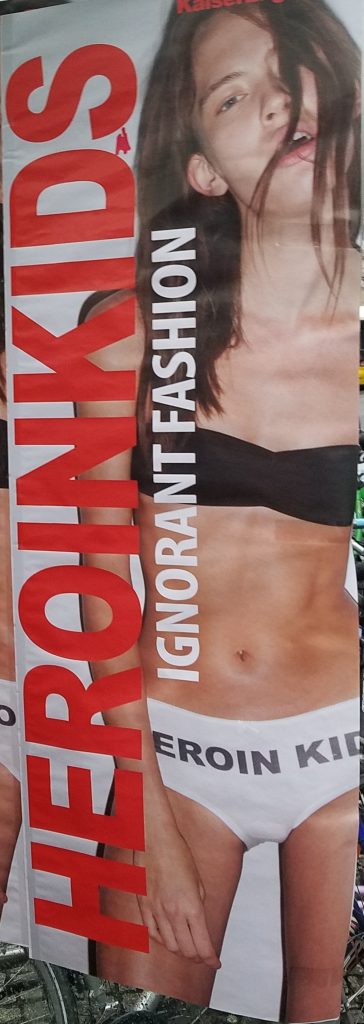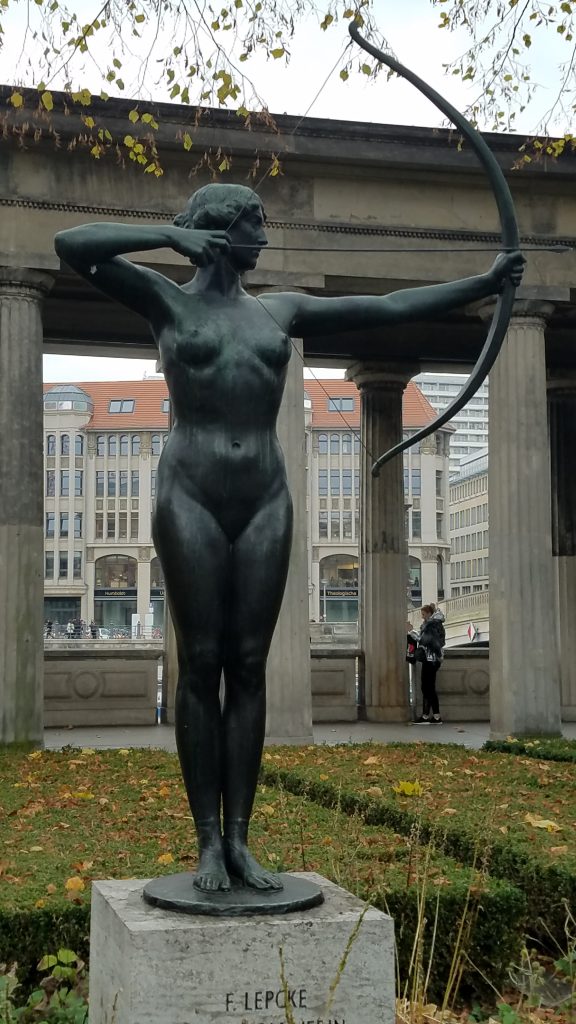
Sometimes it’s not just the things we remember, memorialize, preserve. Sometimes it’s how we choose to do so which has a larger meaning. Berlin, it strikes me, would be perfectly happy to put the Wall firmly in the rearview mirror of history, but there is a tourist draw there, and that cannot be ignored. There is also that tendency, so strong in the wartime and post-war generations to Never Forget.
Europeans, in general, have long memories, when they wish to, and short ones when it serves them. Italy, until recently, flirted for several years with a strongman president, in Silvio Berlusconi, for example, even though there are still people living who remember Mussolini. Germany, which for generations has lived a kind of collective, historic shame for the way it treated neighbors & citizens alike during WWII, but then just elected to parliament a far-right-wing party for the first time since then.
As I commented to a friend, just before leaving on this trip; The last time a far-right party sat in parliament, my family’s home was bombed.
So, went to get a transit pass today. A day pass for transit is 7€ and a Berlin Welcome Card, a tourist-focused offering, is 19.20€ for 48 hours. Since I leave at 11:05 Sunday, I opted for the latter, as it was noon by the time I left my flat, and 48 hours would be just the right time frame. I would have needed three day passes (they expire at 3AM after purchase) for the same coverage.
Off to the BVG I went, in search of said pass. It was a harrowing experience, fraught with language barriers, but I ultimately found an obsequious clerk who claimed I had “Perfect German” and sold me my pass. Now why couldn’t those flustered, German-only speaking public servants before him have just been as fawning? One is left to wonder.
I hopped the S-Bahn (above ground trains, as opposed to U-Bahn, which are subways) and headed up the right bank of the Spree to Museum Island, where, as one might have guessed, the museums are. I traipsed around there for a while, before coming to the conclusion that I really didn’t feel like spending my day inside a museum (or five) so I wandered over to the nearest tram stop and headed to Alexanderplatz. This is a bustling square with malls and open air shops; fairly touristy. Strolled around there in the light rain a bit, then down into the U-Bahn to ride home. It was a nice little jaunt into the city, and away from the bleak neighborhood within which I’ve been cloistered so far.
After some lunch, a change of shoes, and a little catch-up, it was back out into the bleak side of things for a bit. I had decided to check out the East Side Gallery, which is the largest preserved stretch of Die Berliner Mauer (Berlin Wall), at 1,316 metres long (just short of a mile).
To get there, I walked down Köpenicker Straße to the Watergate (a music venue) and then crossed the river. Along Köpenicker Straße is a lot of bleak, a lot of angst and a lot of broken. Here’s some images from that stroll. First, however, a little out of sequence, is an eloquent rejoinder to the hopeful logo above:
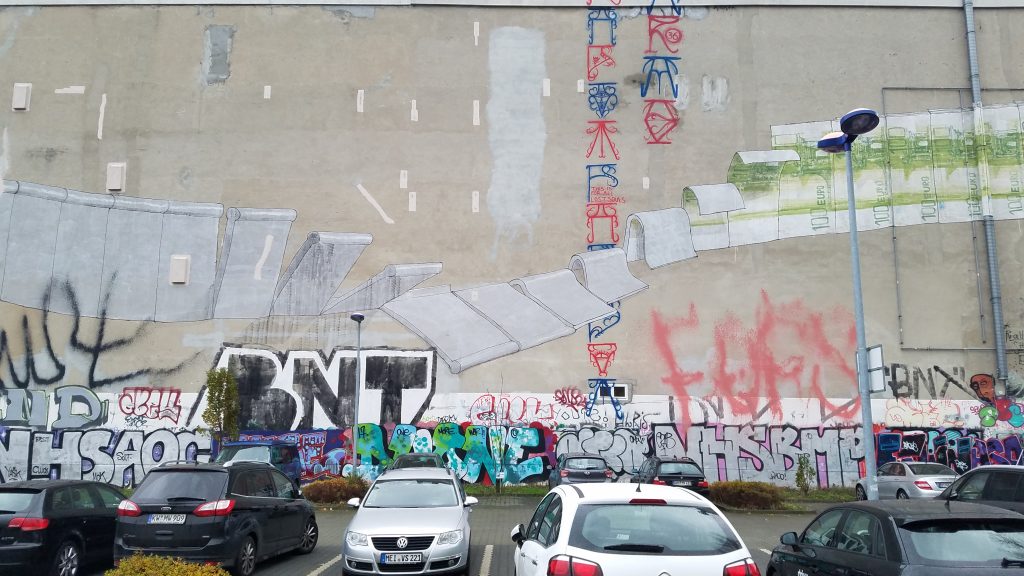
In case you cannot make them out clearly, or don’t recognize the reference, those items along the right side of the image are 100€ notes. The rush from national reunification to what is widely perceived as subjugation to the European Union — the loss of the Deutsch mark (a formerly unrivaled store of wealth); the partnership with, and economic support of poorer neighbors, like Spain & Italy; the surrender of sovereignty to a continental body — for many still bitter from years of Soviet rule, the Euro has come to represent all they hate about the powerlessness state in which they find themselves.
Now, onto the bleak:
One sees these Heroin Kids print ads (above) all over Berlin, and given the opioid epidemic in the US, can be forgiven for thinking they’re part of a hip awareness campaign. Nope, they’re just what they say, Ignorant Fashion. Click the image to see more of this dreck.
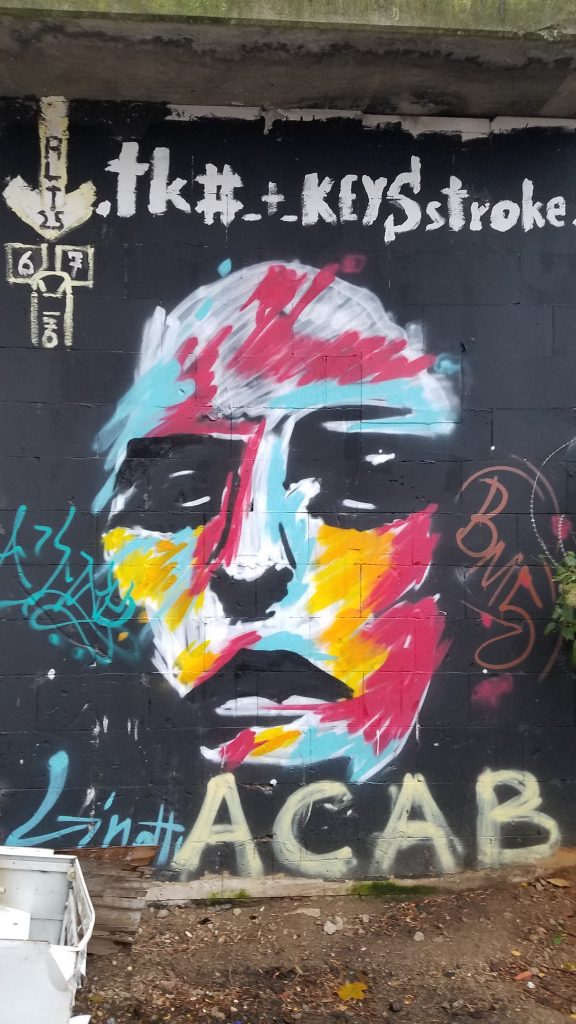
Looks like a striking piece of chalk street art, but really an ad for a Windows app which encodes long functions or “macros” onto adjacent pairs of keys (hence “keySstroke”) such as <s> and <x>. Much of the polished street art one sees around is actually advertising, it seems.
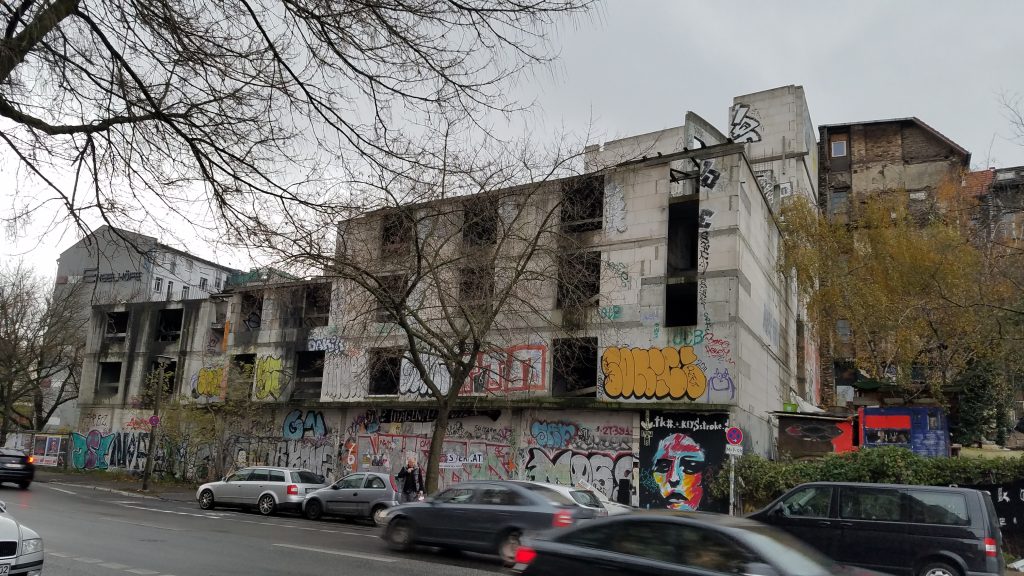
Above is the (recently) burned out shell of a squat. The pavement out front was littered with charred remains of mattresses, chairs and the like, and an acrid, smoky smell hung in the air.
The following series of photos are all of SOBR’s It’s Time To Dance poster project (Facebook page here). I stumbled across this, but others have been following this artist’s work for some time. There’s a pretty good article on the subject here.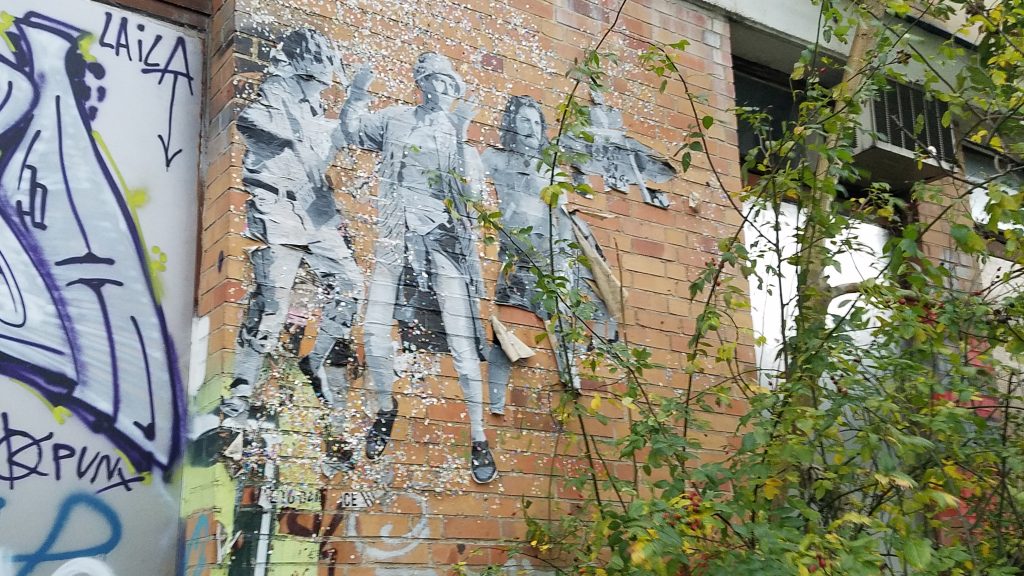
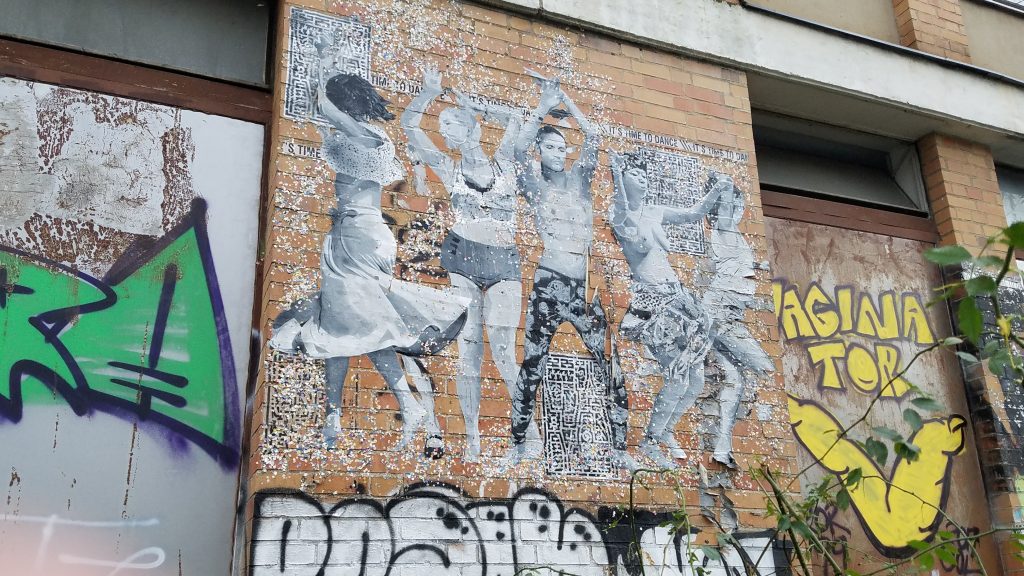
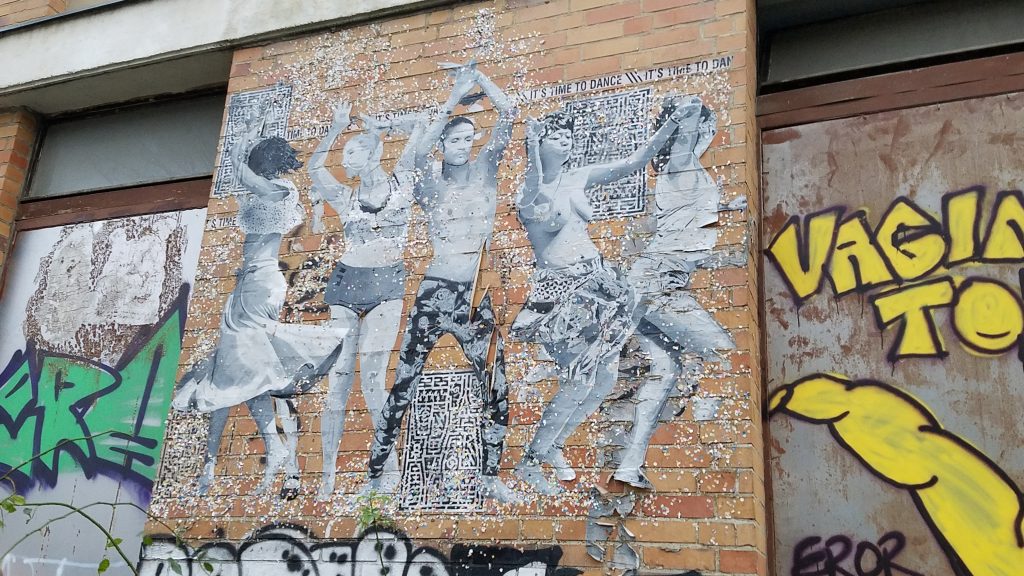
One striking element of this poster art is that by this time it’s coming loose, like the girl’s head right below. These loose pieces flutter in the wind, animating the work, and giving it at once an air of impermanence, fragility and energy.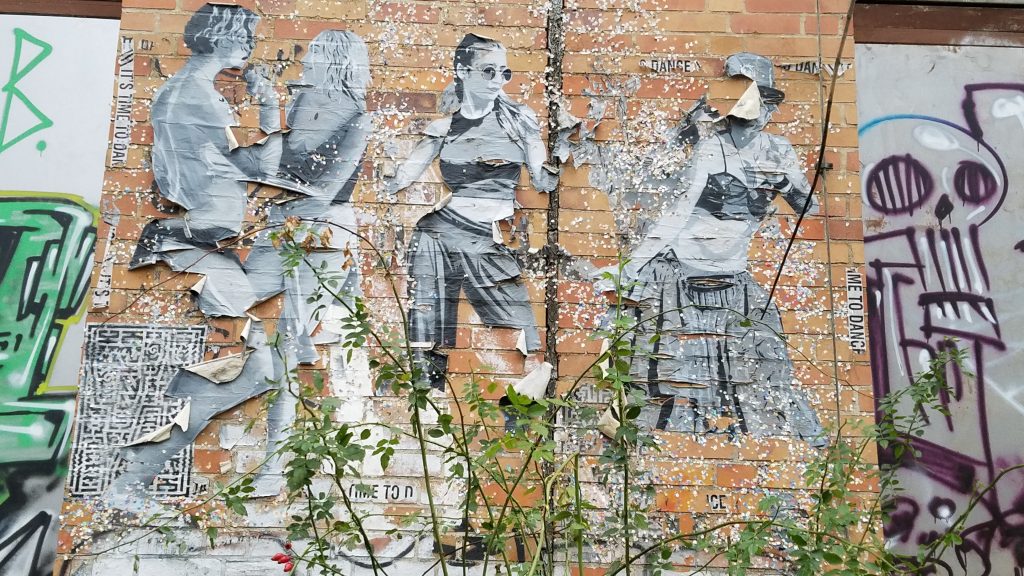
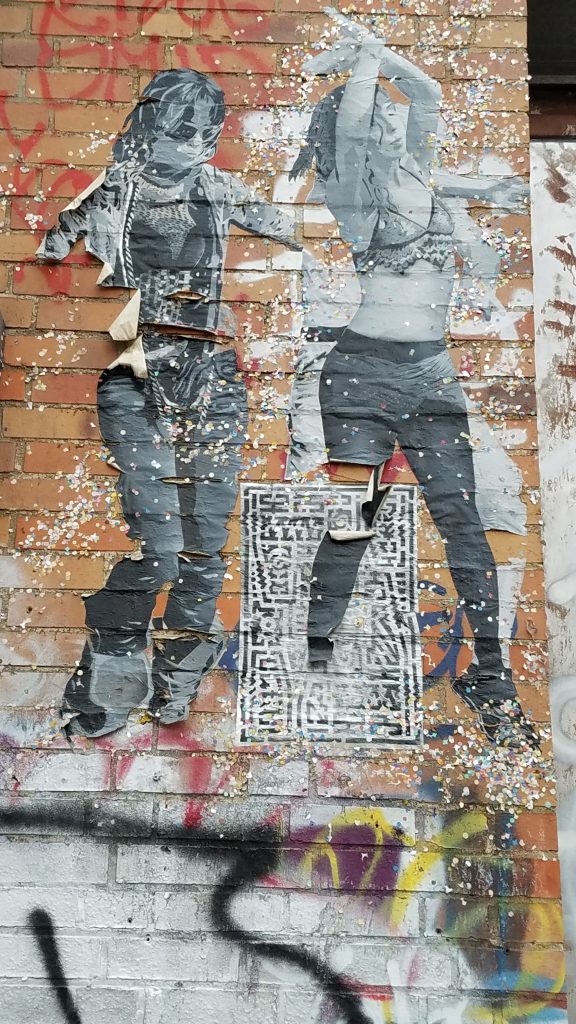
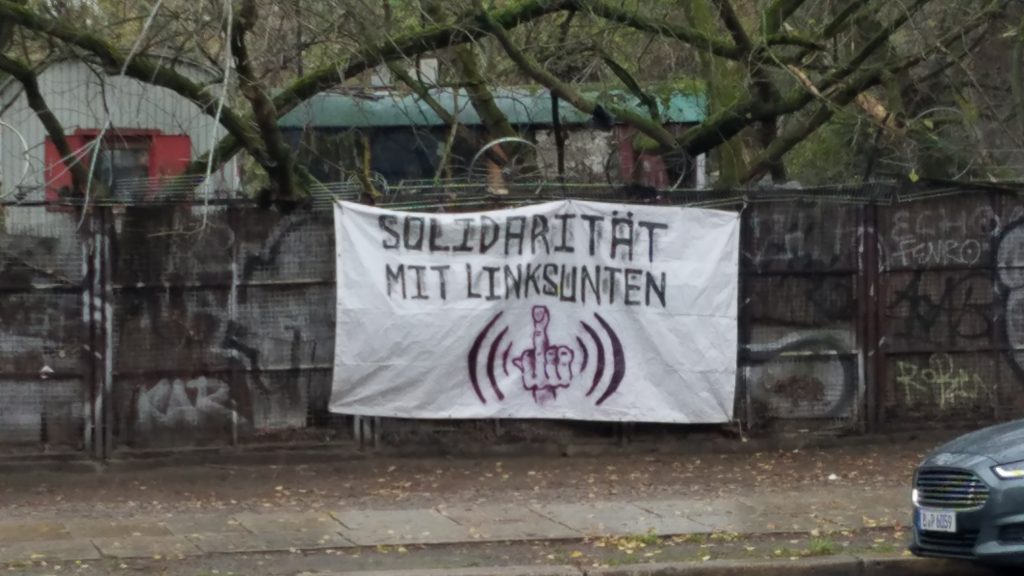
Above is a current squat, a campground really, which was active as I walked by. The sounds of loud music, argument, discussion; the smells of cooking, car repairs (reeked of acetone) and more. The slogan Solidarität Mit Linksunten translates as Solidarity With The Bottom Left, which sounds like some sort of softened anarchy to me.
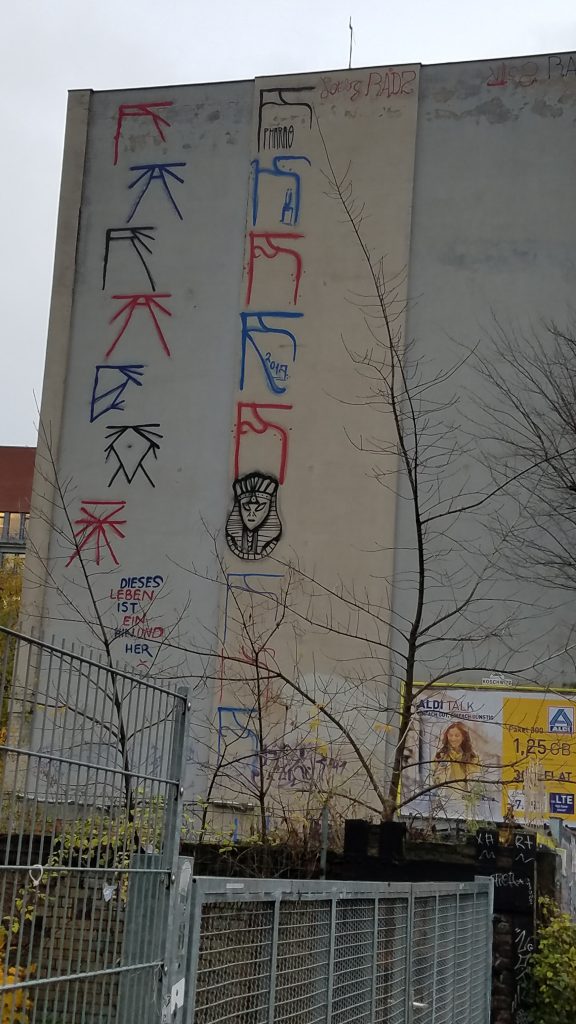
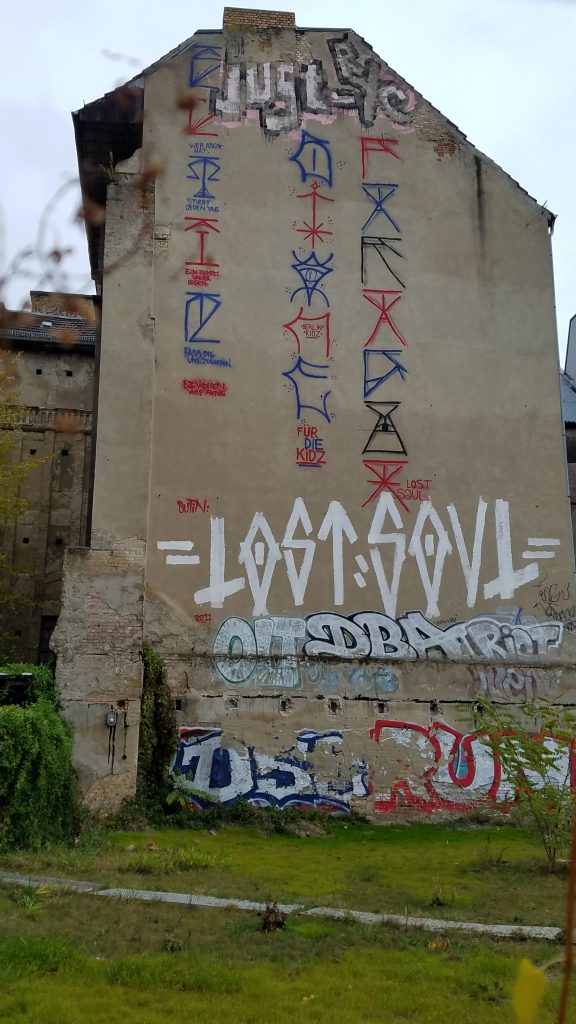
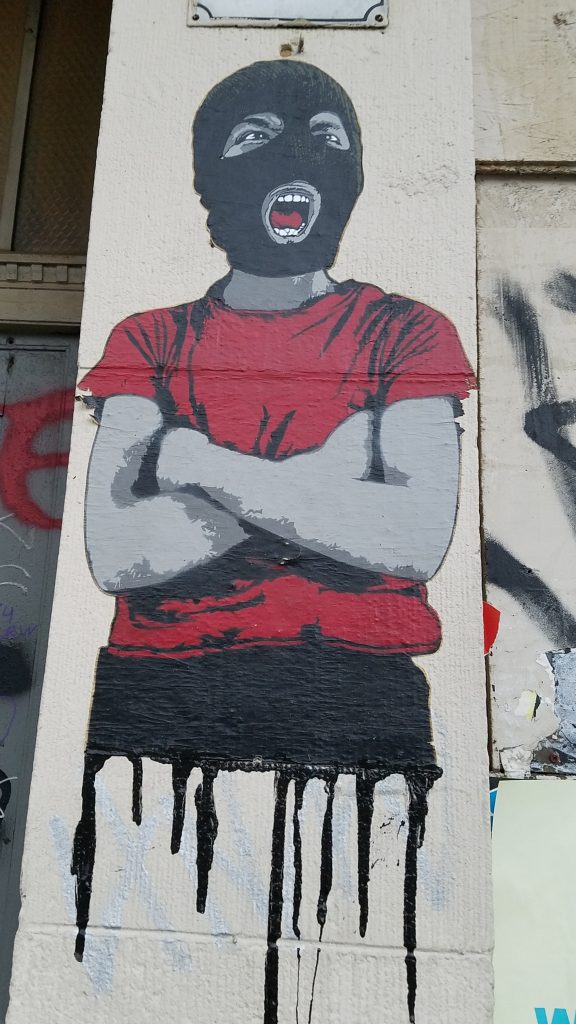
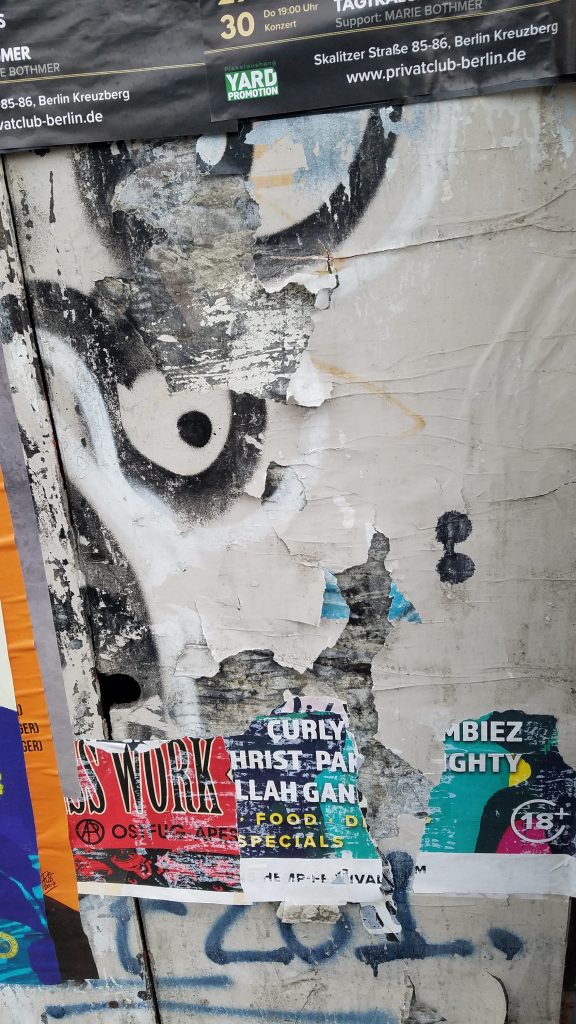
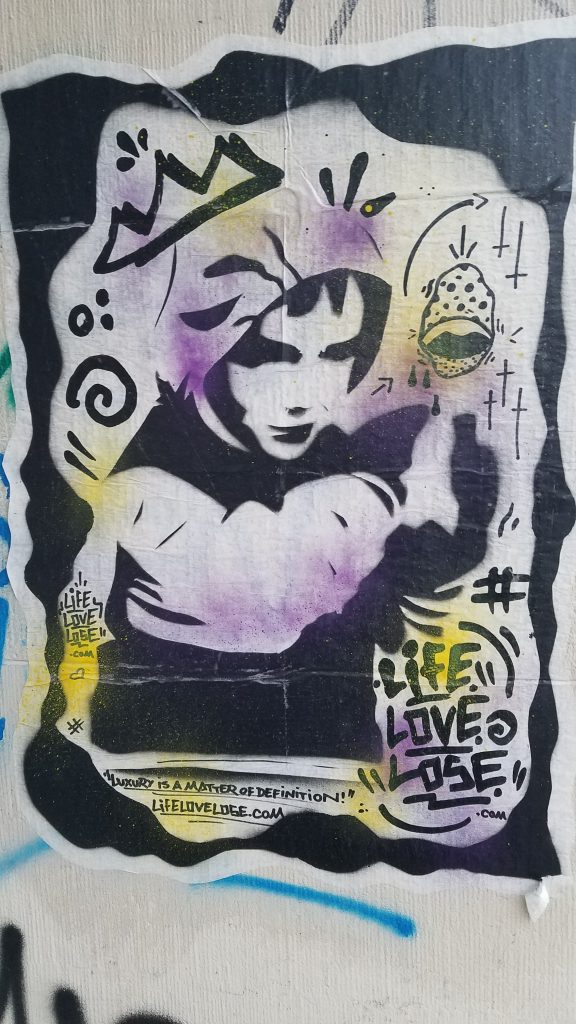
Another piece of street art verging on advertisement. This directing one to the artist’s web page, where books and more are on sale.
The Wall fell, as it were (actually was opened) on 9 November 1989. The first construction on it was on 13 August 1961. So in the greater scope of history, the wall has been gone almost as long (28 years and 2 days) as it stood (28 years, 2 months, 27 days). It is still recent history, but it soon will just be history.
Update: Mon 5 Feb 2018: Today is the day that the wall has been down for as long as it was up. Longer, by the time anyone reads this. As the Washington Post reported:
On Monday, Berliners celebrated a once unthinkable occasion: The Berlin Wall has now been gone for longer than it stood. But on the same day, the city’s authorities confirmed the discovery of a previously unreported stretch of the wall in the district of Pankow in northern Berlin.
It had already been discovered by a man named Christian Bormann in 1999, but the now-37-year-old Berlin resident kept his discovery a secret for almost 20 years as German authorities kept erasing more and more remnants of the city’s division.
“Berlin wasn’t ready for this discovery when I came across it,†Bormann told The Washington Post.
Following are some photos of the East Side Gallery wall segments, but first a juxtaposition, viewed from the Schilling Bridge, looking north:
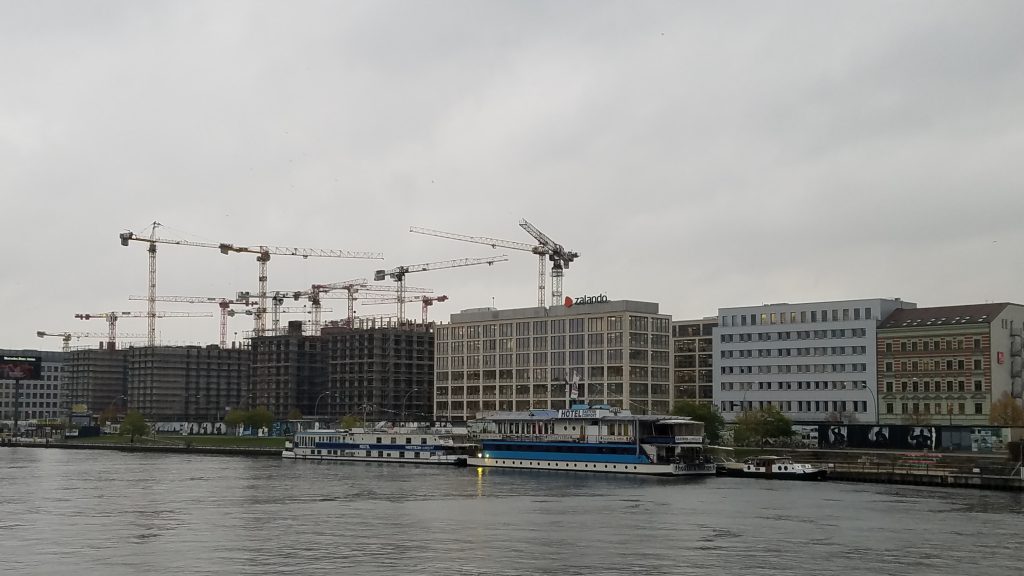
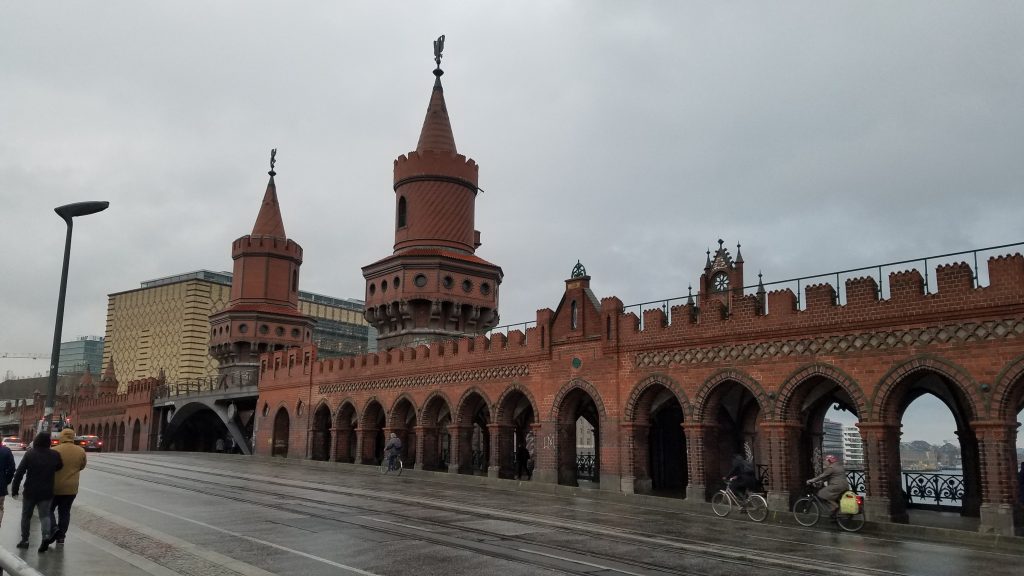
Just views from one side of the bridge and the other.
Here’s some wall shots. Remember, most of this graffiti is not historic, but an “artistic” response, years later, to the wall and what it means (meant):
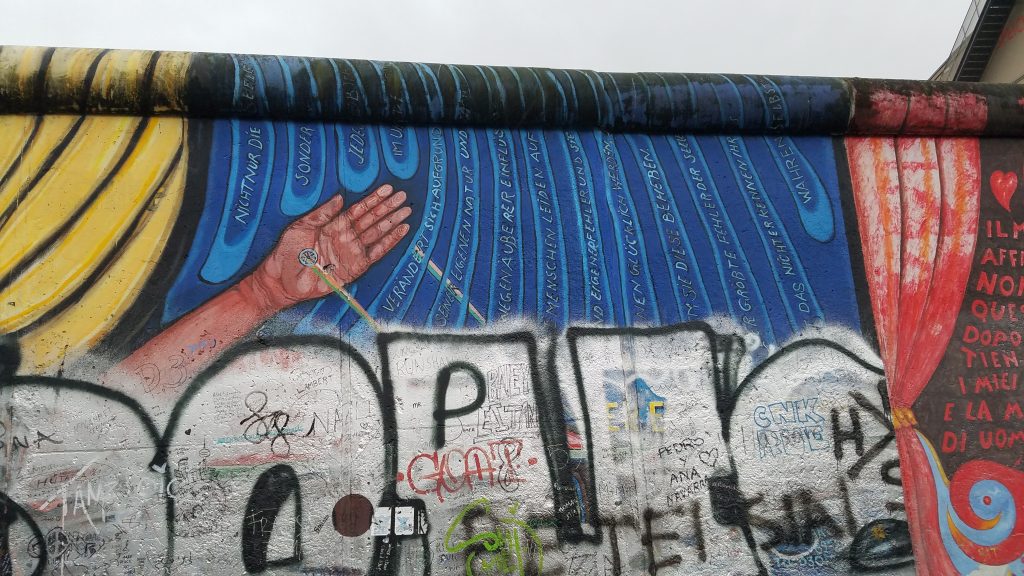
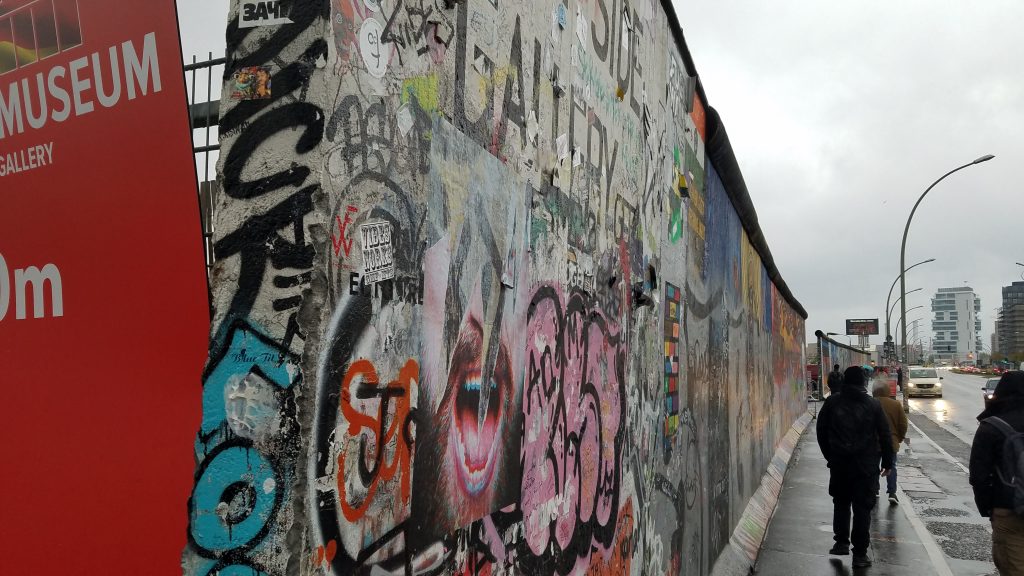
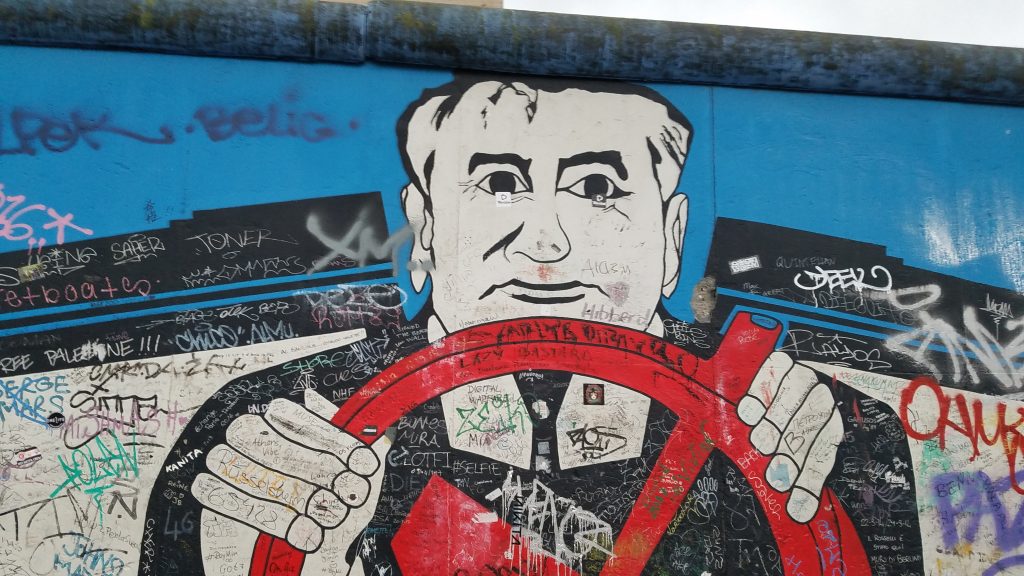
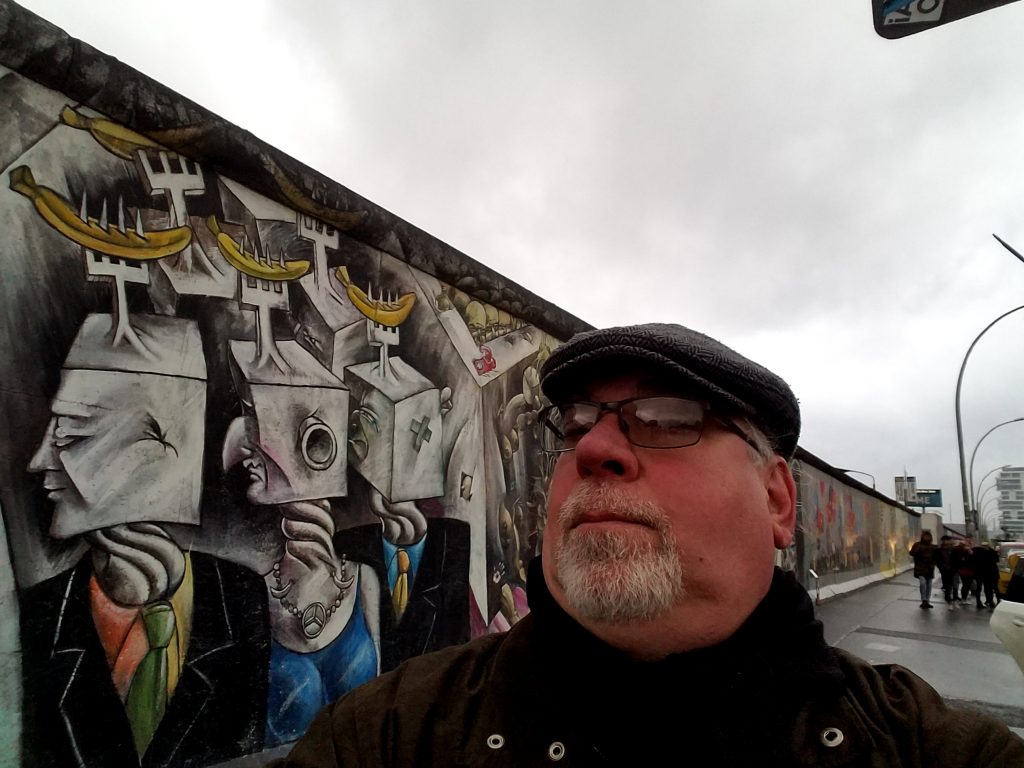
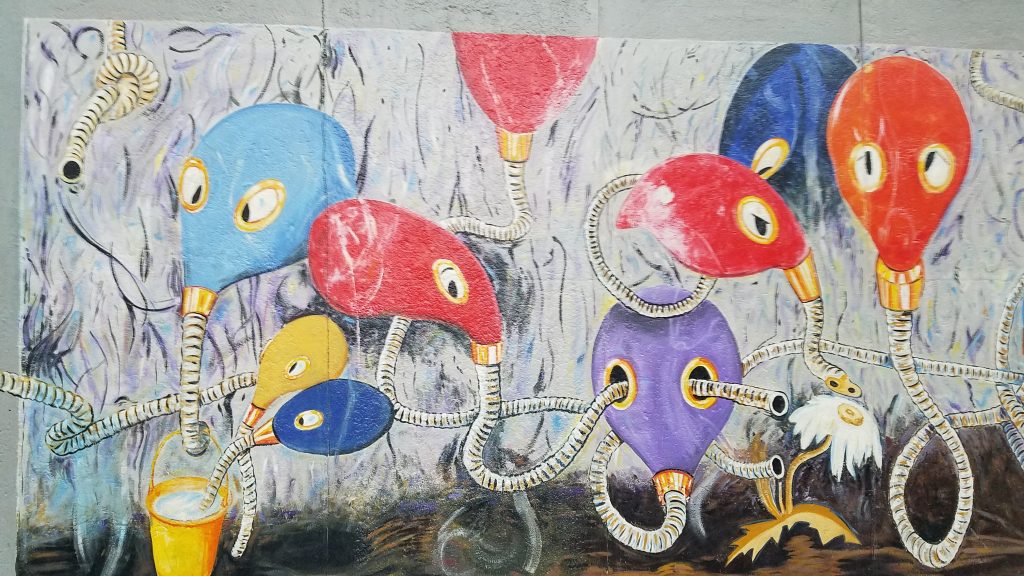
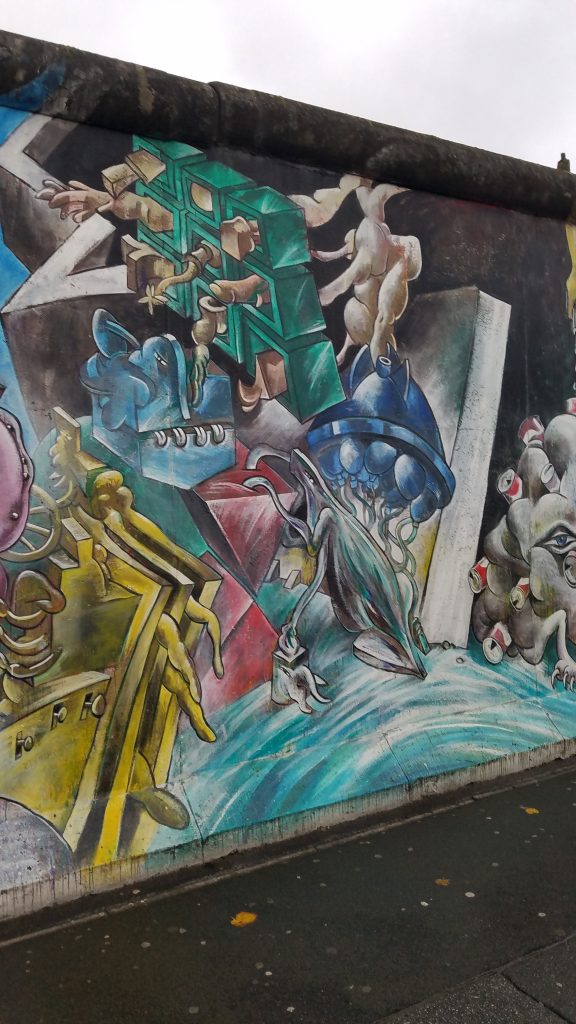
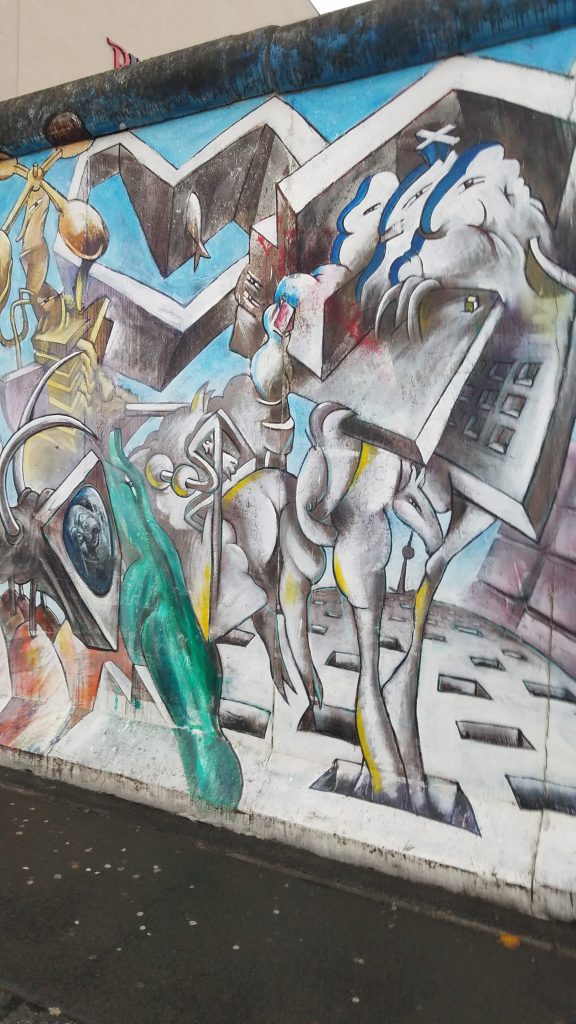
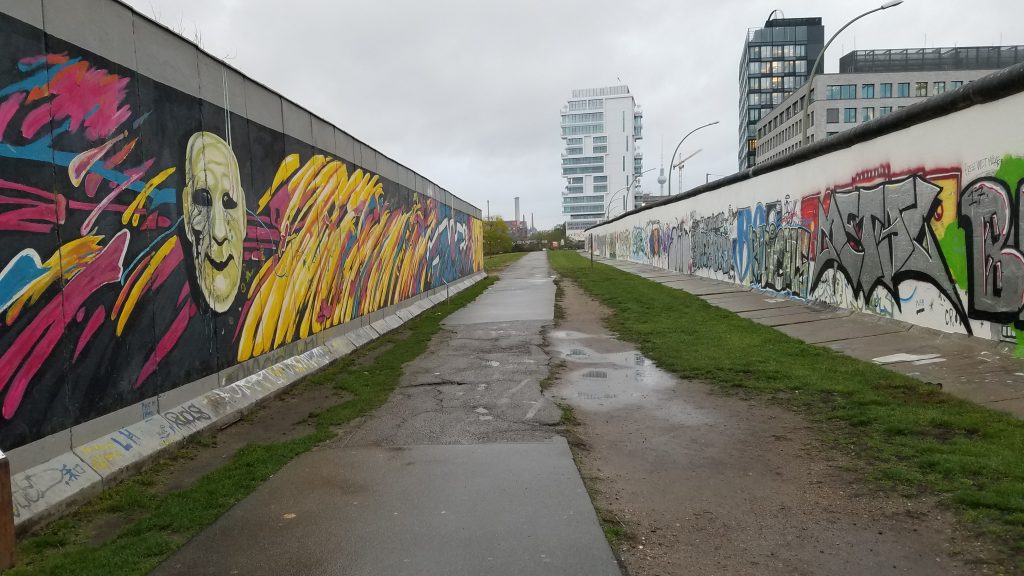
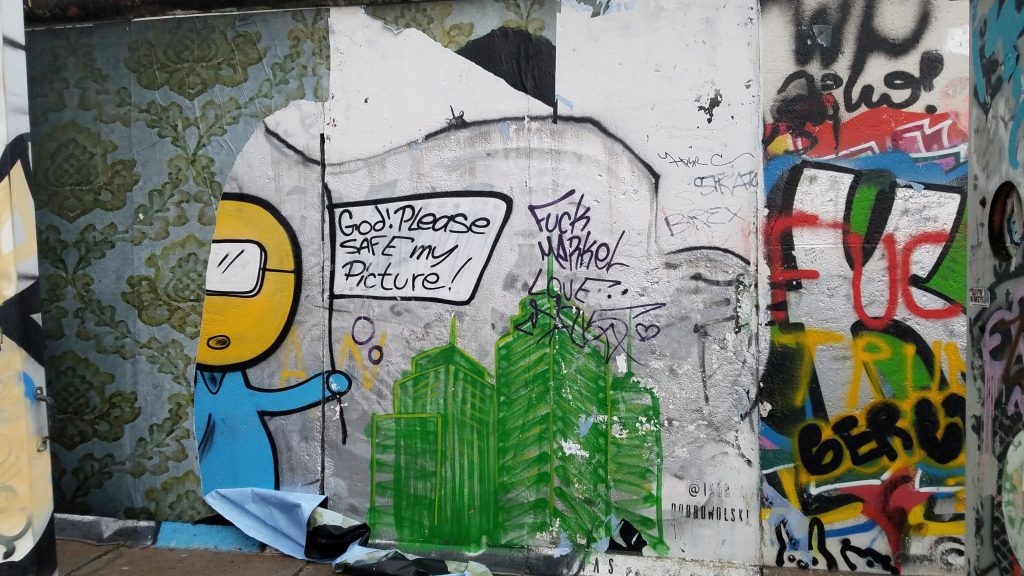
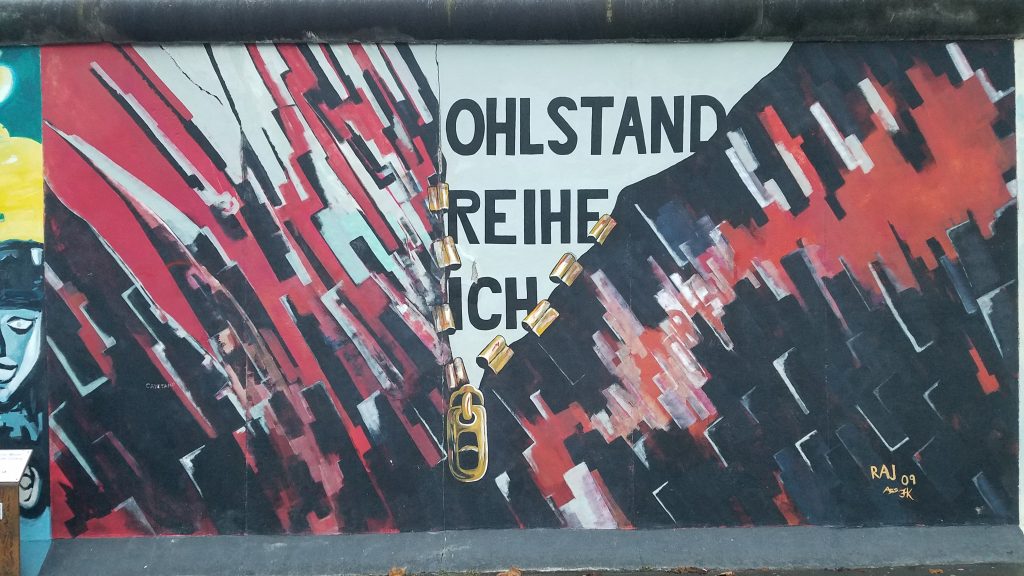
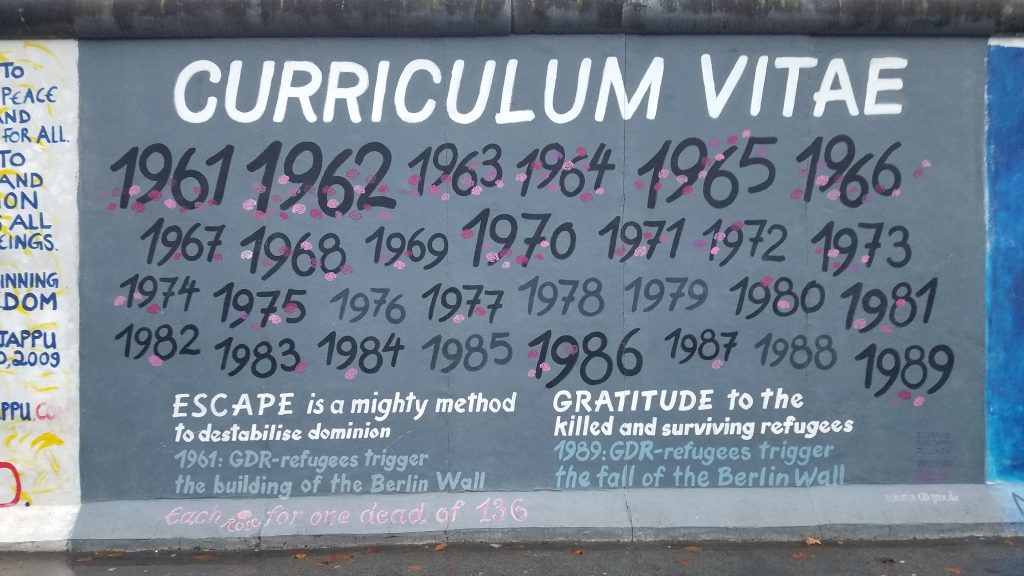
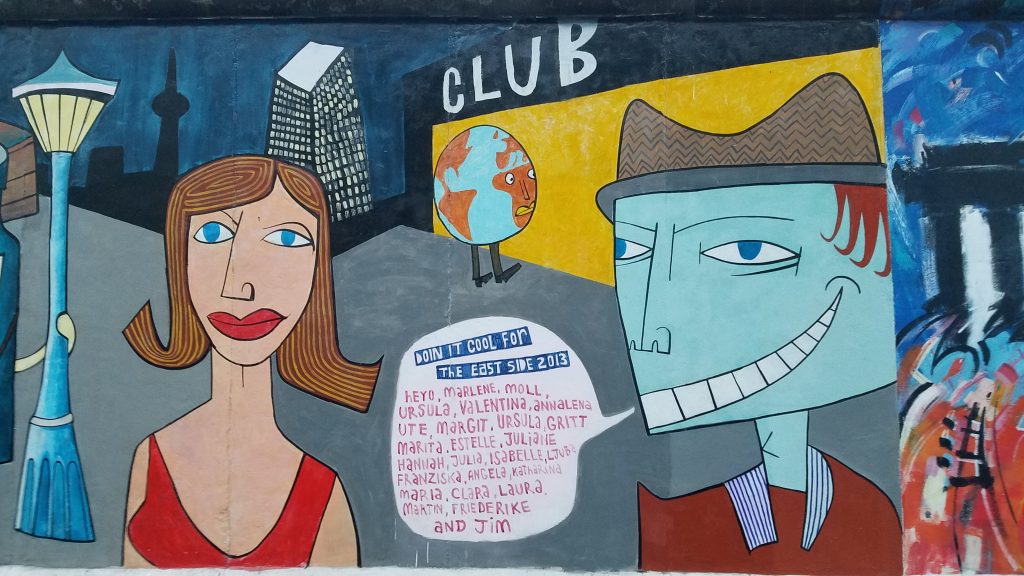
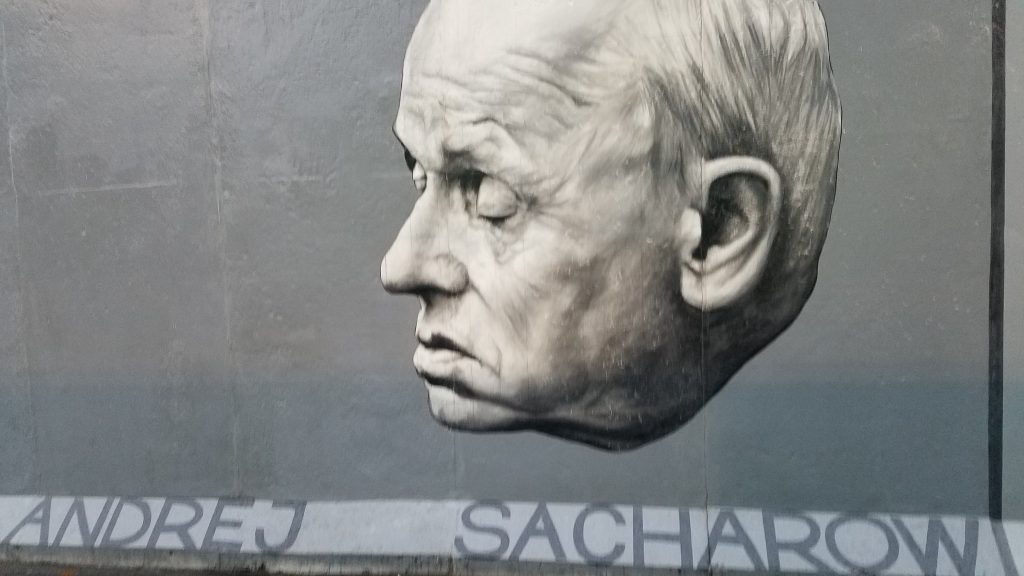
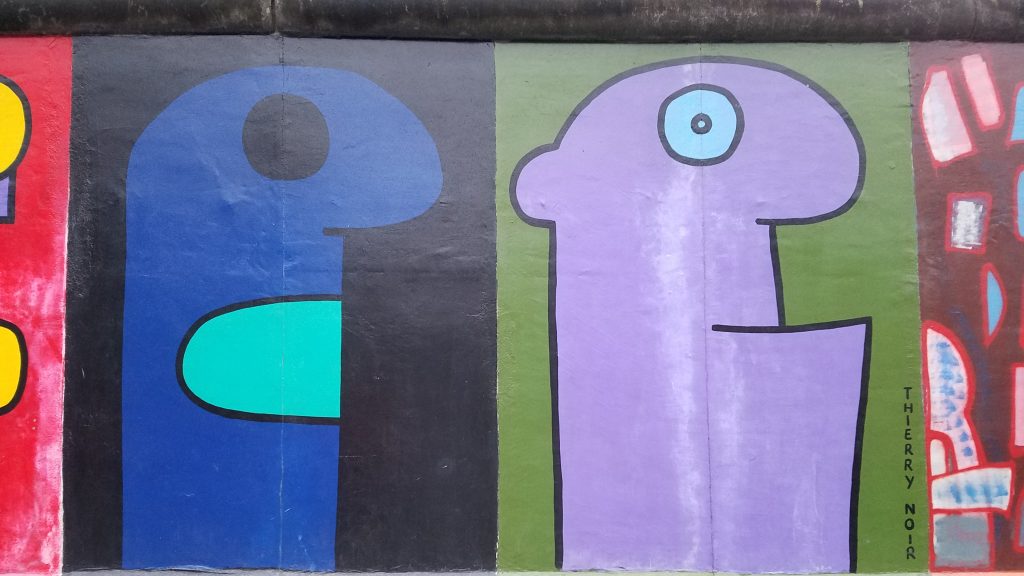
Please see more on Thierry Noir, below.
Oddly enough, as one approaches the end of this stretch of wall, and a luxury office/condo project underway, one finds this warning placed in a gap:
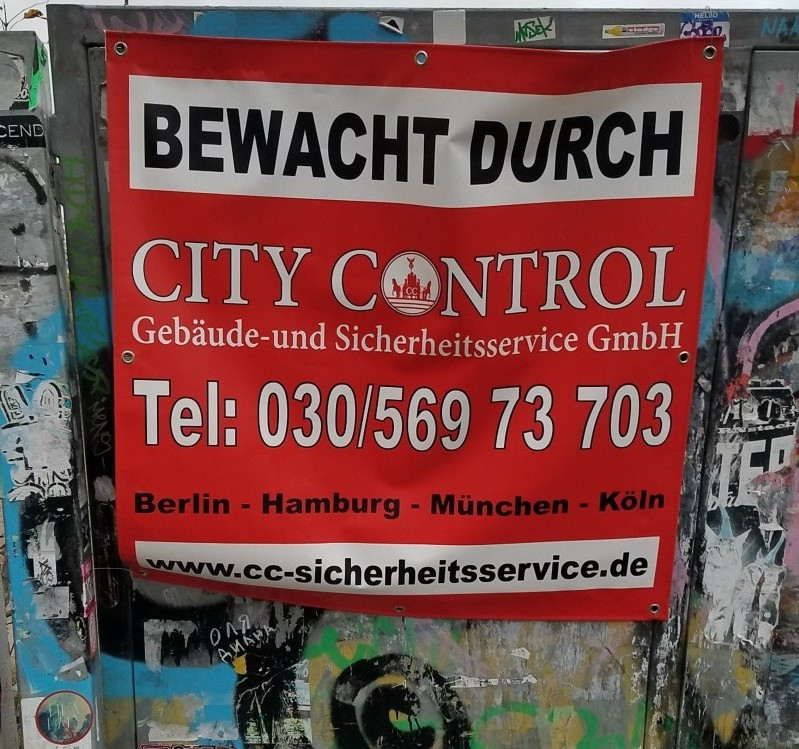
It translates as “Guarded at the hands of City Control.” Brrrrrrr
The following image shows a segment of the wall from an area I walked both on my way home from East Side Museum, but also just a few days ago. I include it here for historical context, and due to who took the photo. First the context. As you can clearly see here, “The Wall” was in fact a “wall system.” It most often is comprised of two walls, with a “no man’s land” or “death strip”, on the east side of the Wall, here follows the curve of the Luisenstadt Canal (filled in 1932). This is the exact same area I ventured along in the first post of this trip.

This image of the Berlin Wall was taken in 1986 by Thierry Noir at Bethaniendamm in Berlin-Kreuzberg.
The maker of the above photograph, Thierry Noir, is also the artist who made the final wall painting shown above.


